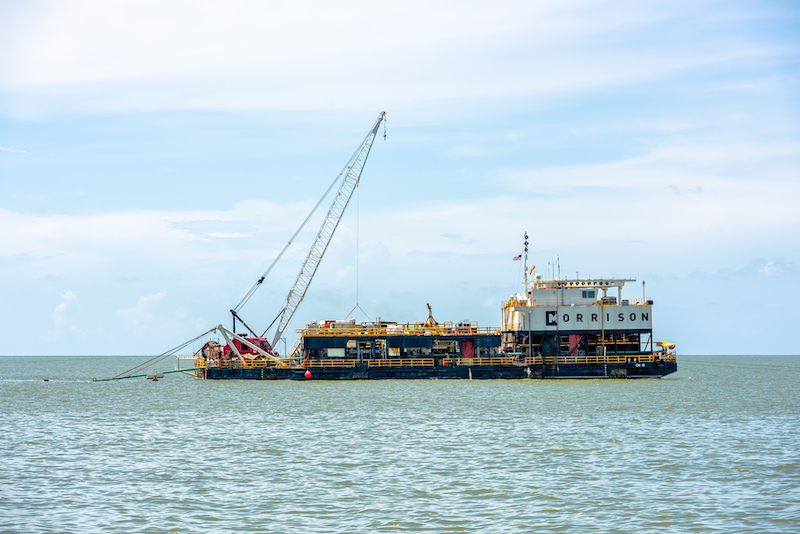U.S. Gulf Coast Oil Patch Gets Lucky, So Far, in Busy Hurricane Season
HOUSTON (Reuters) — A very active Atlantic hurricane season so far this year has not sent storms across U.S. oil and natural gas fields in the northern Gulf of Mexico, sparing energy companies billions of dollars of losses and consumers higher fuel costs.
The 2023 Atlantic hurricane season has been another in a string with above average activity producing three major hurricanes with winds above 111 mph (179 kph) out of six hurricanes among 20 named tropical storms.
So far this year, only one storm, Tropical Storm Harold, on Aug. 23 disrupted operations at the three refineries in Corpus Christi, Texas, just for a day due to power outages.
That was the biggest impact to the Gulf Coast oil industry this year. Gulf of Mexico offshore operations account for 15% of U.S. crude oil production and 5% of the nation's natural gas production, while about half the country's refining capacity and natural gas processing plant capacity is located along the Gulf coast.
"We got really, really lucky this year," said Colin White, consultant with Rystad Energy in Houston. "But there is still an inherent risk that producers have to take into account."
The hurricane season officially starts on June 1 and ends on Nov. 30.
“I wouldn’t want to say the hurricane season is over, but it is waning,” said Jim Foerster, chief meteorologist for DTN. “This season has been a powerhouse.”
Between 2019 and 2021 storms in the Gulf like Hurricane Ida shut an annual average of 24 million barrels of oil production, said Rystad's White.
At an assumed price of $70 per barrel of oil, that equals an average lost revenue per year of about $1.7 billion, White said.
So far, no offshore production has been hit.
Meanwhile, last year's hurricane season was the first season since 2014 that left most offshore production unaffected, said Troy Vincent, senior oil market analyst for DTN.
Less than 200,000 barrels per day (bpd) of production was shut, Vincent said.
Refiners' view of low-activity hurricane seasons sparing them of crude supply disruption price, however, may change, said Pet Jelinek, Ernst & Young Americas oil and gas leader.
"As we’ve seen in recent years, tropical storms in the Gulf of Mexico can have significant impact on energy operations, disrupting energy production, supply chains and pricing," Jelinek said.
"However, the energy system is changing," he added. "Reduced global production of oil and gas has made feedstocks more expensive. The benefits of a milder hurricane season may not be the boon refiners and consumers had once seen."
Related News
Related News

- Kinder Morgan Proposes 290-Mile Gas Pipeline Expansion Spanning Three States
- 1,000-Mile Pipeline Exit Plan by Hope Gas Alarms West Virginia Producers
- Valero Plans to Shut California Refinery, Takes $1.1 Billion Hit
- Three Killed, Two Injured in Accident at LNG Construction Site in Texas
- Boardwalk’s Texas Gas Launches Open Season for 2 Bcf/d Marcellus-to-Louisiana Pipeline Expansion
- New Alternatives for Noise Reduction in Gas Pipelines
- Construction Begins on Ghana's $12 Billion Petroleum Hub, But Not Without Doubts
- DOE Considers Cutting Over $1.2 Billion in Carbon Capture Project Funding
- Valero Plans to Shut California Refinery, Takes $1.1 Billion Hit
- Newsom Seeks to Aid Struggling Refiners Following Valero’s California Exit





Comments